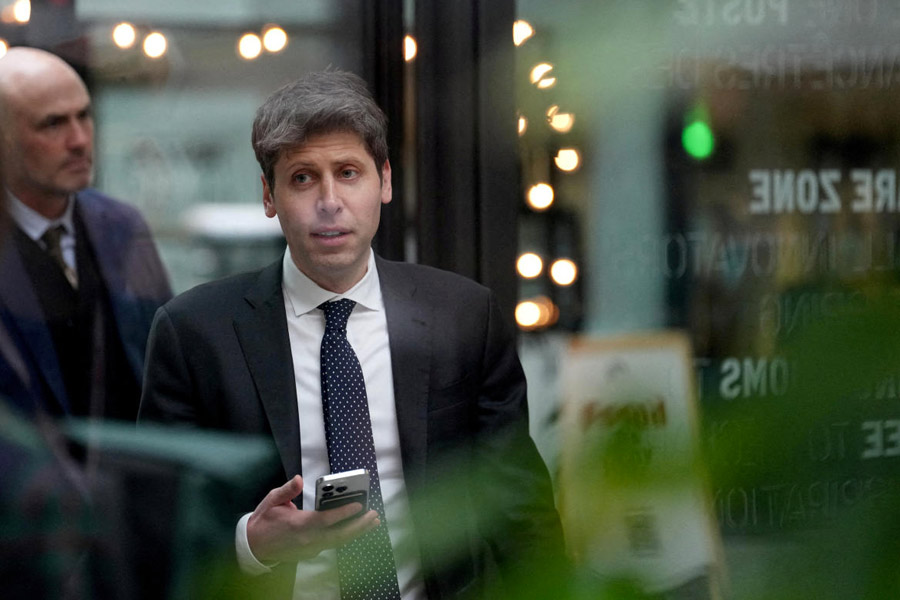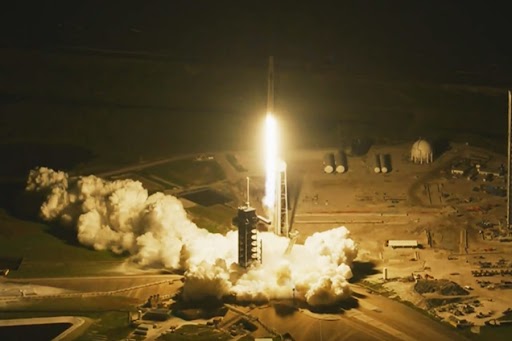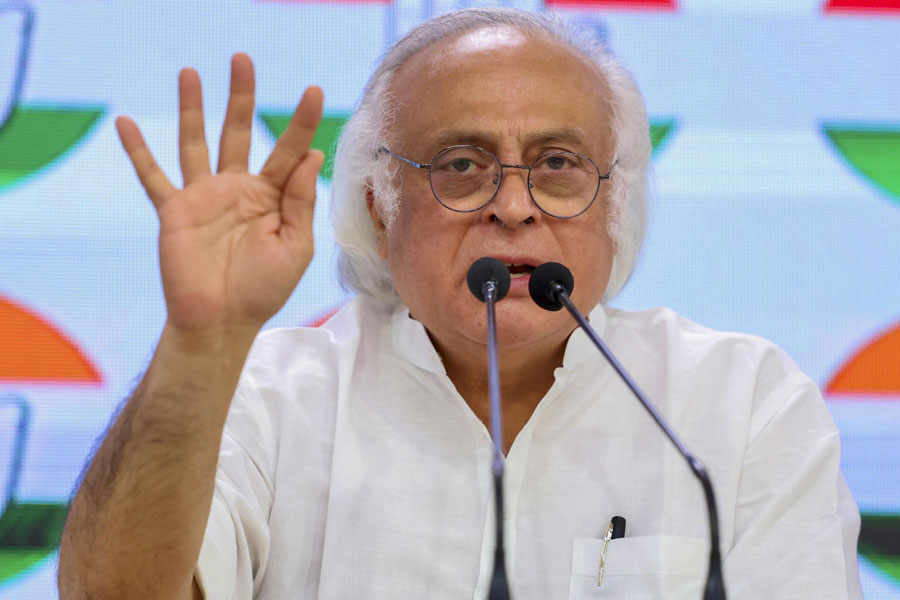 |
 |
| Boom to bust: Trucks stand idle following the ban on mining; and (below) a Sima protest |
Bellary’s boys are not sons of the soil, goes a joke doing the rounds of this small Karnataka town. They are, instead, sons of dust.
This dust rose from the hundreds of iron ore mines that dotted the town and neighbouring Sandur and Hospet. It brought with it winds of change: from an obscure town, Bellary became the hub of mining lords, big bucks, private choppers and Bentleys.
But the dust settled in July this year, when the Supreme Court suspended all mining in the district. Without the black gold — and the big bucks it brought — Bellary has become a different place.
Once lazy and laidback, it is seeing mass unrest for the first time. Recently, the town woke up to police pickets placed across the main market area. Shops were shut and wayside vendors shunted out. The district commissioner’s (DC) office was barricaded with platoons of lathi-wielding policemen.
The shutdown was in preparation for a protest by the local Sponge Iron Manufacturers Association (Sima). Around midday, hundreds of men marched to the DC’s office, shouting slogans and carrying placards that read, “We want iron ore” and “Save our lives”.
The 36 sponge iron plants in Bellary — which employ 20,000 people — have shut because of the non-availability of iron ore. “We haven’t laid off any employee. But the factory owners’ debts are spiralling. This can’t go on for long,” says Sima president T. Srinivasa Rao.
The town looks desolate. Roadside hotels, eateries and mechanic shops — most of which lie locked — speak of an economic fall. The broken, potholed roads, though, still stand witness to the 7,500 ore-laden lorries that plied daily.
You’d think a heavy vehicle bazaar has been set up at Sirguppa Road, on the outskirts of Bellary — where over 100 trucks stand idle in a guarded enclosure. “These are among the 4,000 lorries seized by financiers because their owners defaulted on loan payments,” explains K. Venkata Rao, president, Bellary Transport Operators Association.
The local transport industry rode into big business with the mining boom. “About 16,000 lorries were bought and registered in the district in the last five years,” says Rao. The truck traffic sustained a subsidiary industry as well — 4,500 mechanic workshops and 3,000 automobile showrooms mushroomed across the town.
Big money hit the highway, as buying and plying a truck became a route to riches. “From petty traders to shopkeepers, everybody took bank loans to buy trucks. They hired drivers and cleaners and were in business, transporting iron ore to ports and rail heads,” recalls Rao.
July’s mining ban put a brake on the industry. “There is nothing left for the truckers to transport. In one sweep, 7,500 people became jobless,” says Rao. The Rs 22-lakh 10-wheeler trucks, used to transport heavy goods such as iron and steel, lie idle because they are not compatible for carrying other wares.
Like transport, many get-rich-quick wannabes entered the mining sector as well. “Before 2003, mining was a secondary industry in Bellary. There were barely 40 firms and iron ore sold at just Rs 200 a tonne,” says D.V. Pitchamuthu, director, south zone, Federation of Indian Mineral Industries.
After 2003, huge demand from China changed the dynamics of the industry. Ore prices shot up to Rs 3,000 a tonne. Suddenly, everyone wanted to be a miner. “Farmers converted agriculture land into mines, people left jobs to do mining, traders turned part-time miners,” says Pitchamuthu. In two years, over 100 mining leases were distributed and one lakh people employed.
A new swish set arrived in town — the mine owners. Name a fancy car and one of Bellary’s mining barons was sure to own it. Eight mine owners had private helicopters. Bellary also became the badland of Karnataka, as illegal mining flourished and government laws were brazenly flouted.
The party ended this year. “Miners pumped in money to buy machines. Their capital sank with the shutdown. To cut costs, they laid off most of their employees,” says Pitchamuthu.
Bellary is feeling the ripples of losing an industry that had become the town’s chief cash cow. It’s a hot day, but the swanky Baskin Robbins ice cream parlour, near the main market, is empty. “We were running to capacity till last summer. Business dipped 70 per cent this year,” says the parlour manager.
Property owners are feeling the pinch as well. Mining brought huge numbers of migrant workers to Bellary. Sriram Rao saw a business opportunity there. He constructed a two-bedroom flat above his single-storey house in Ganesh Colony and rented it to a mine engineer for Rs 10,000 a month. Last month, Rao’s tenant lost his job, vacated the flat and left town. “I can’t find a tenant now, though I’ve halved the rent,” says Rao.
On the other hand, the ecology is looking up. “The district is getting back its green cover,” says DC and district magistrate Amlan Aditya Biswas. Last year, the DC’s office commissioned an animal health study which found a high incidence of breathing and gastroenterological disorders in cattle and sheep. “This was because of the dust in the air,” says Biswas, adding that crops and trees were cleared to make way for mining.
Biswas, however, doesn’t believe Bellary is breathing its last. “The town’s garment, rice mills and animal husbandry industries are reasonably successful. They’ve been around for longer than mining,” he says. The end of the mining mania is good news, he holds. The mining money created an elite minority which changed the face of Bellary. Multinational stores opened. People were drinking latte in the coconut water-sipping town. Harley-Davidsons were zipping down its roads. “In the last four years, 200 bank branches opened in Bellary. This isn’t in proportion to the town’s small size,” he explains.
What followed was an increase in crime. “In the last five years, more than 100 gun licences were granted. Businessmen, transporters and traders roamed armed, as they dealt in big money,” says Biswas. Road accidents — especially hit-and-run cases — peaked between 2008 and 2010, going up from 69 in 2003 to 145 in 2010.
As migration increased, a sea of new faces became part of the small town, where, earlier, everyone knew each other. “Migration created a range of social tensions, especially because many miners were living alone in the town,” says political scientist Sandeep Shastri.
But with the mines shut, Bellary’s dust storms are settling. The soil may be able to reclaim its sons now.











